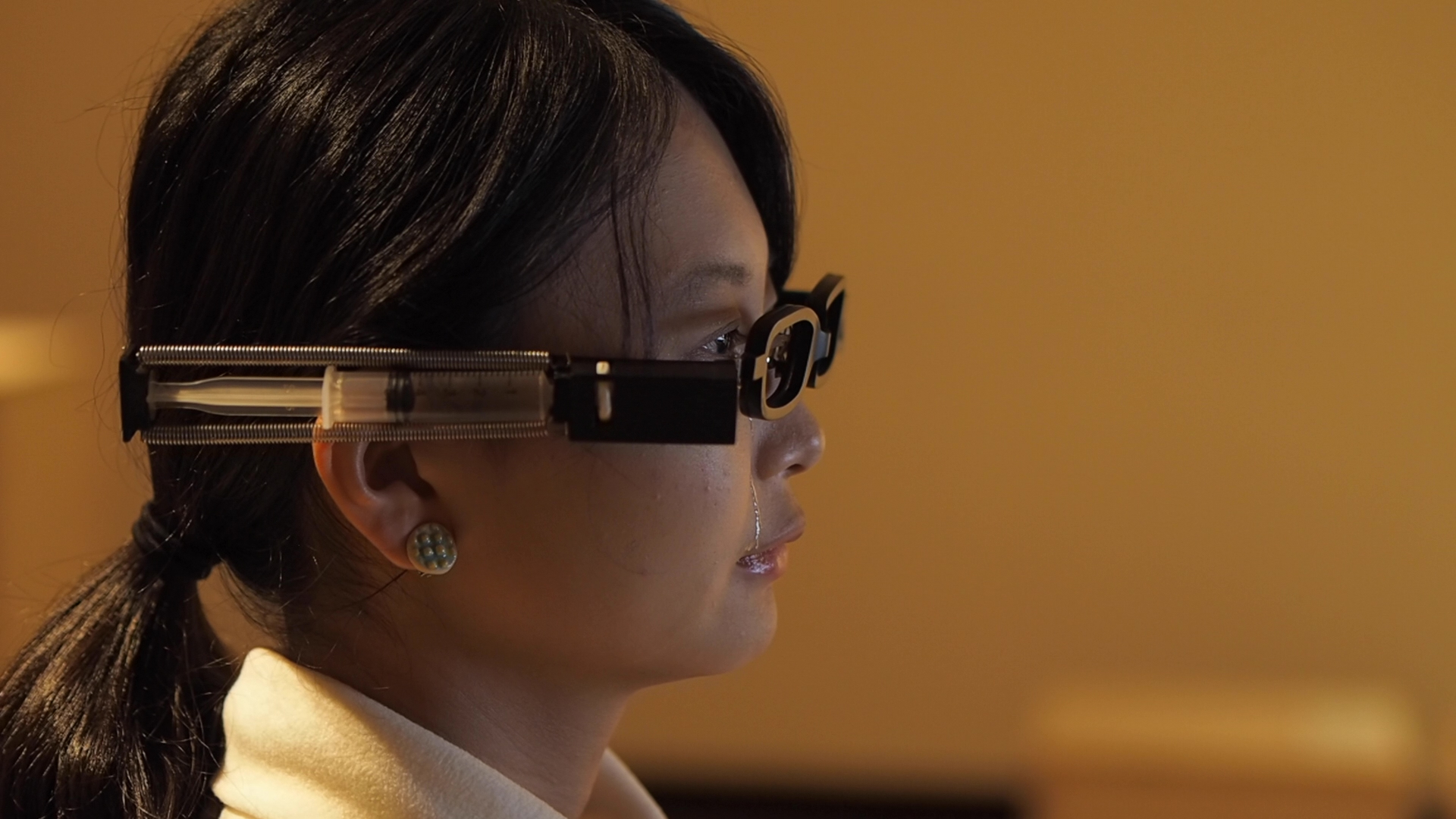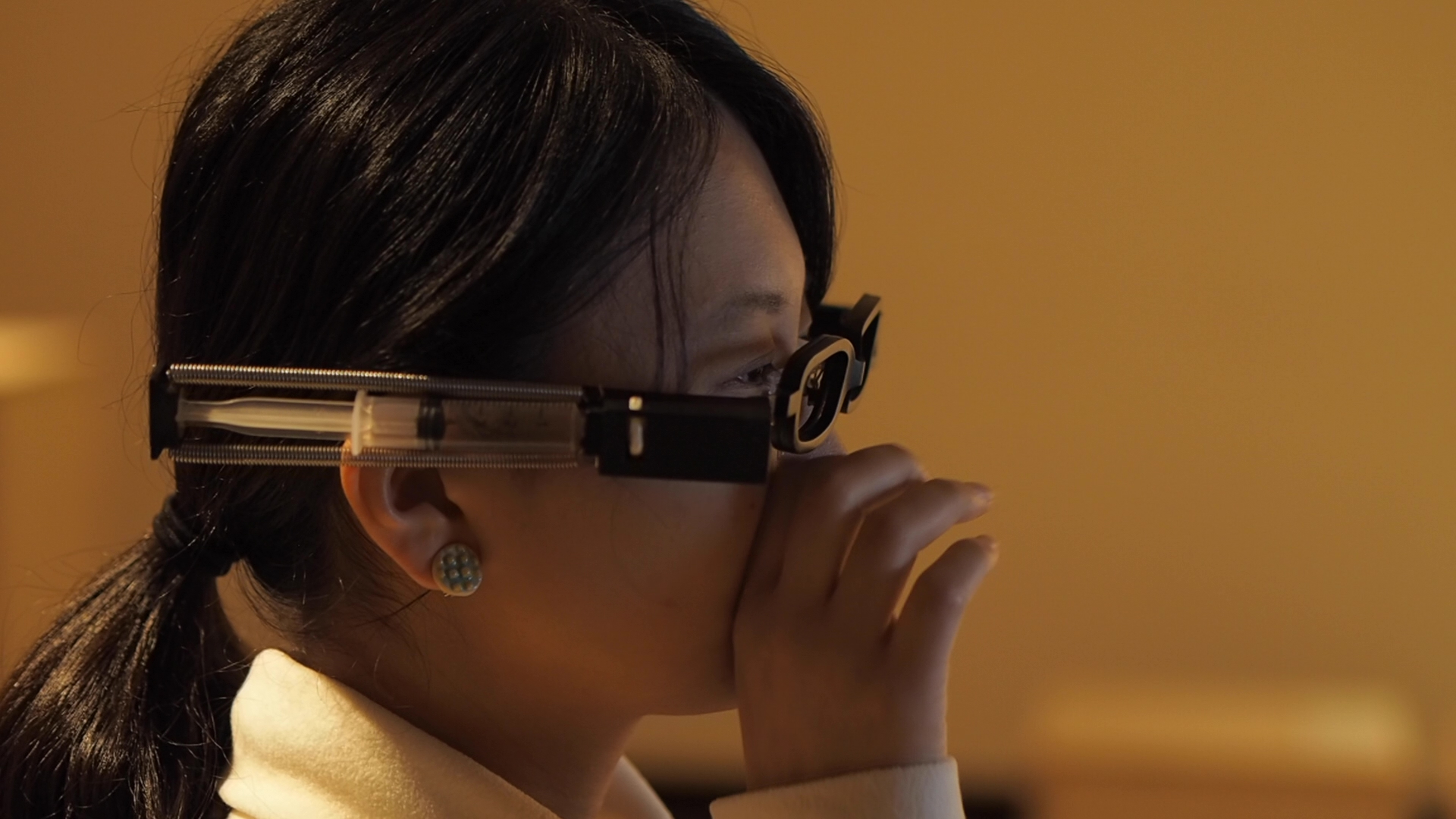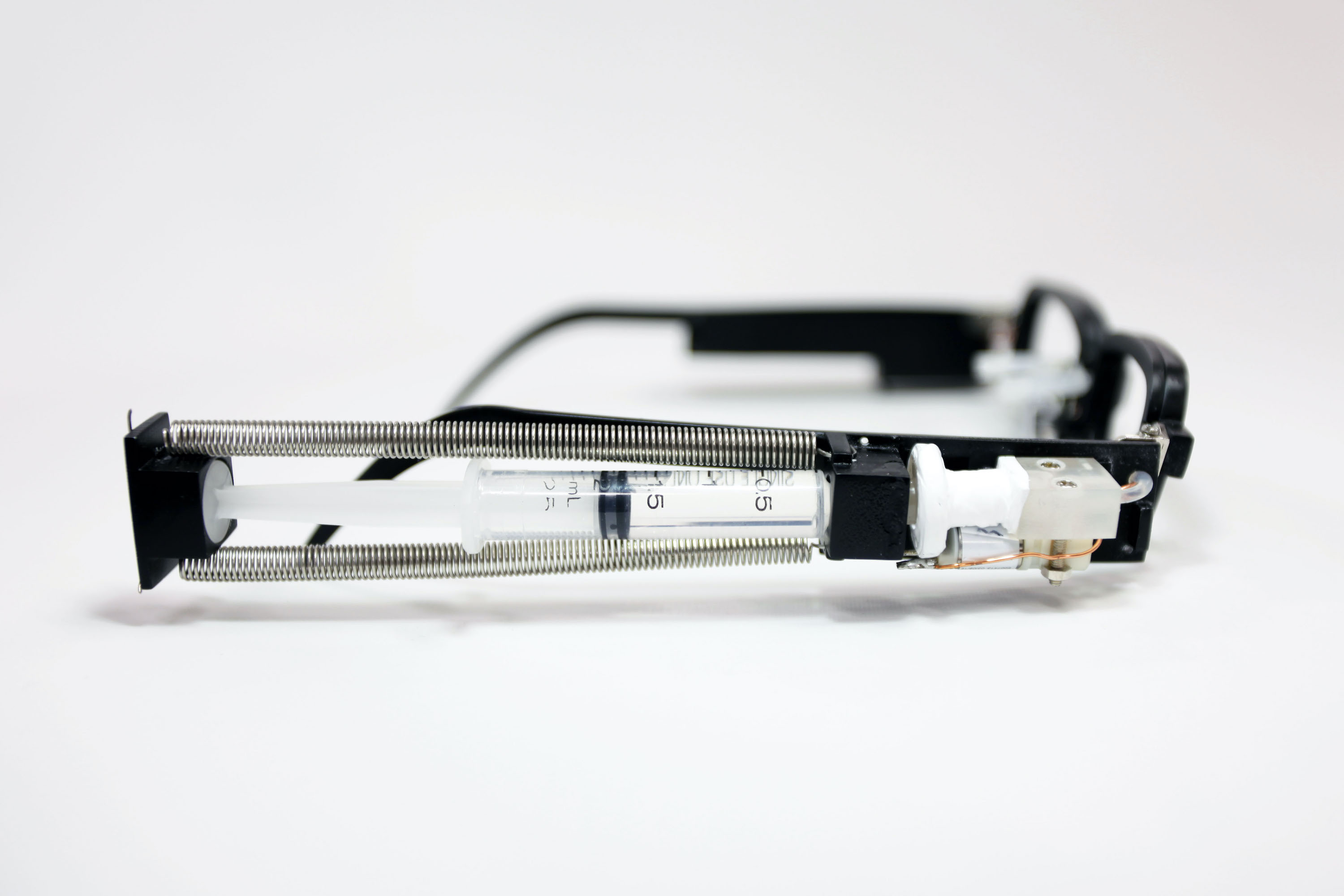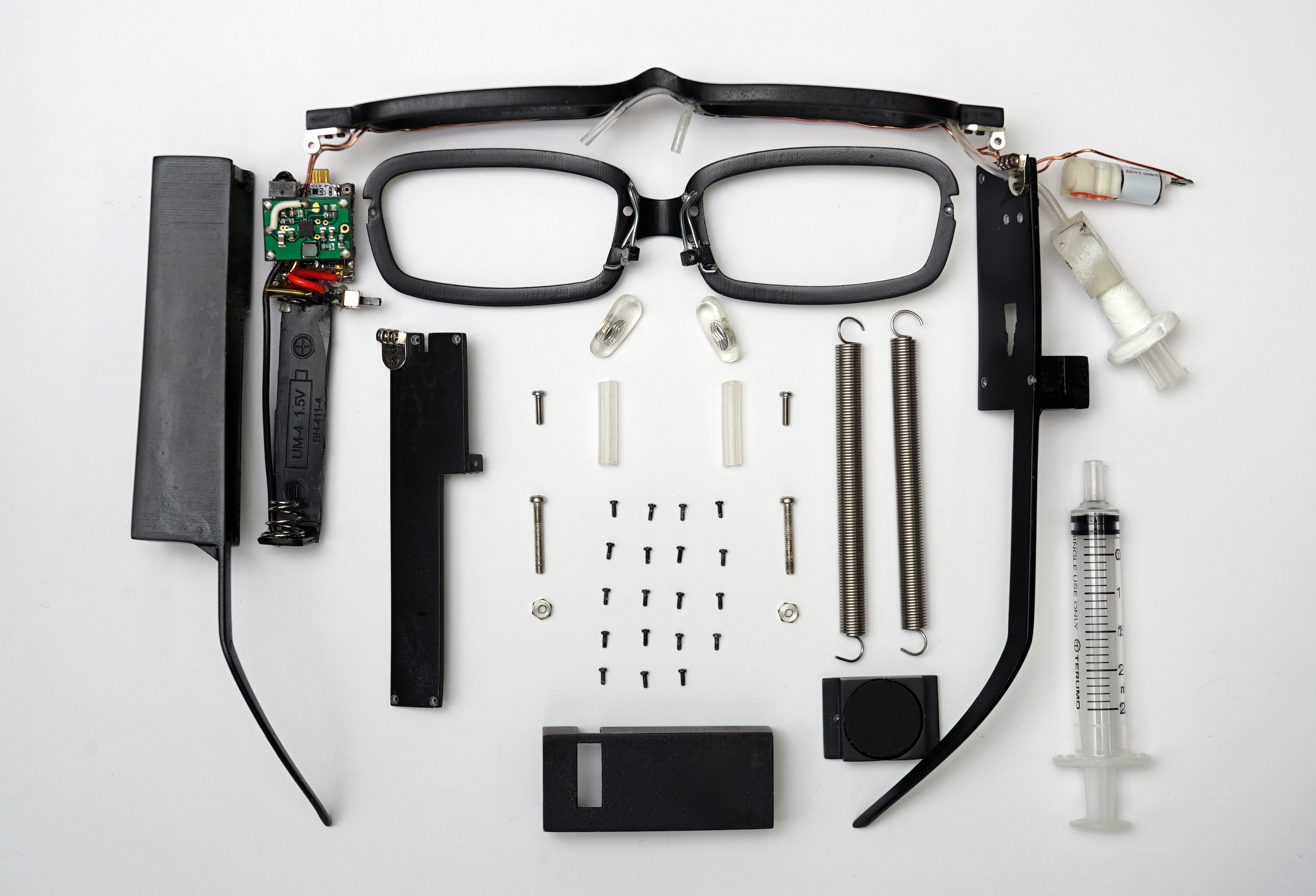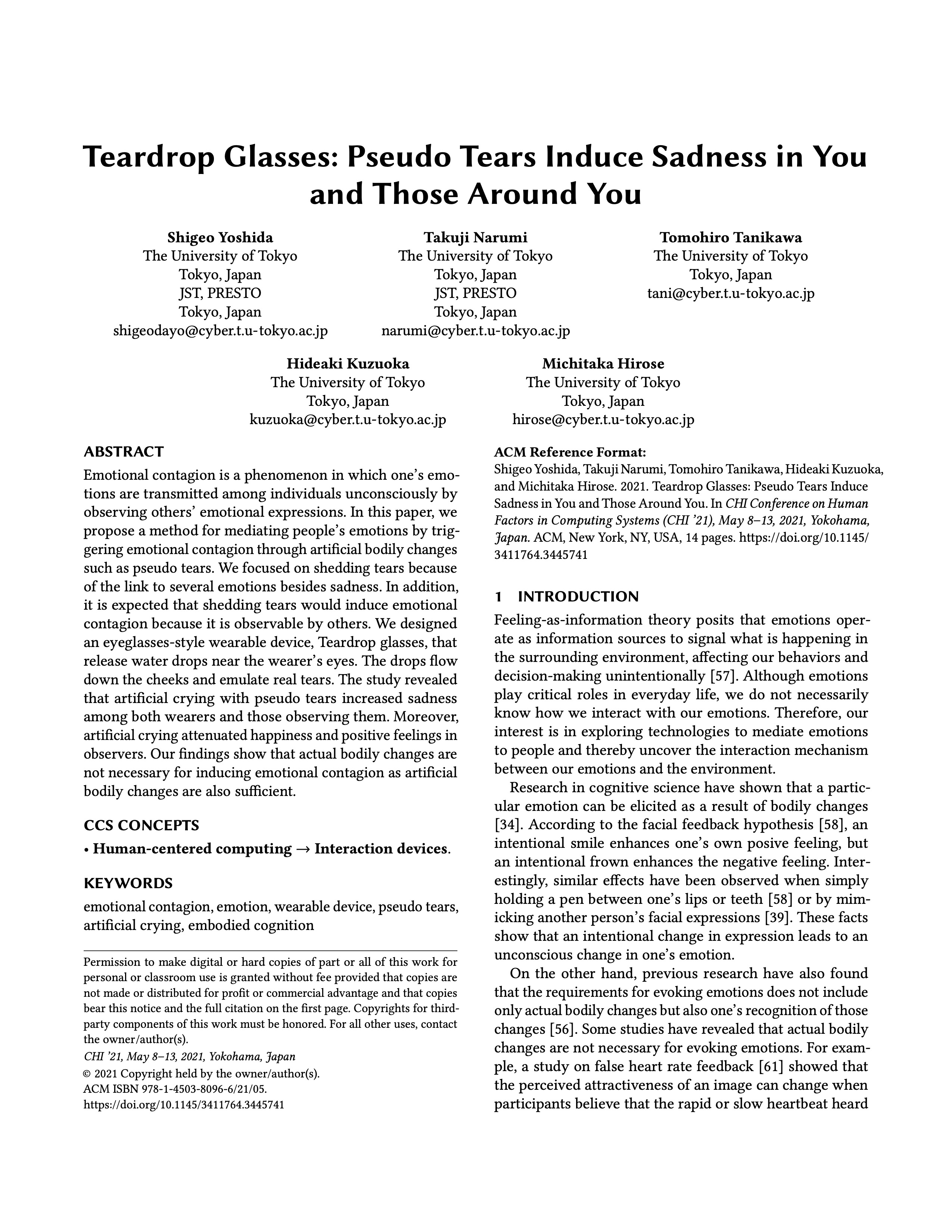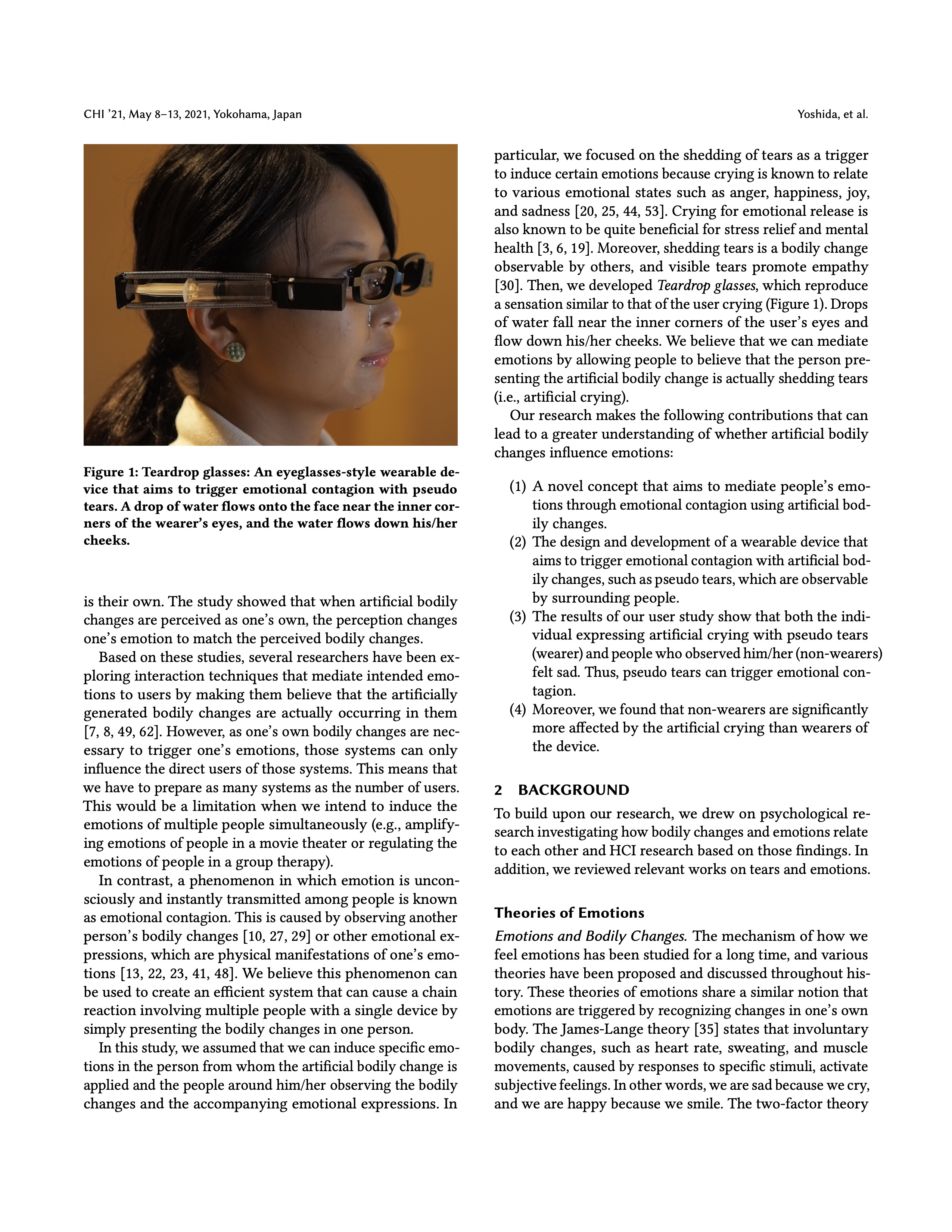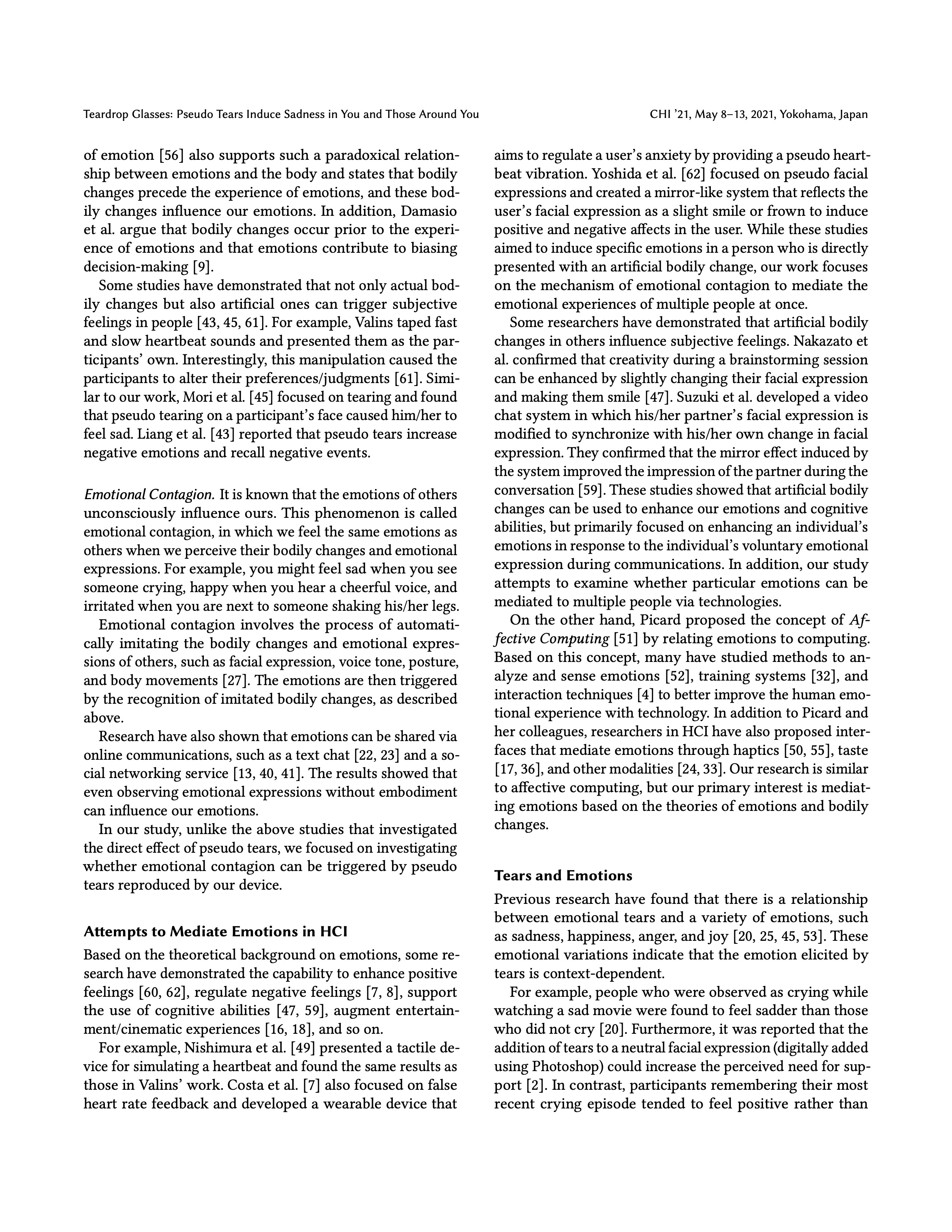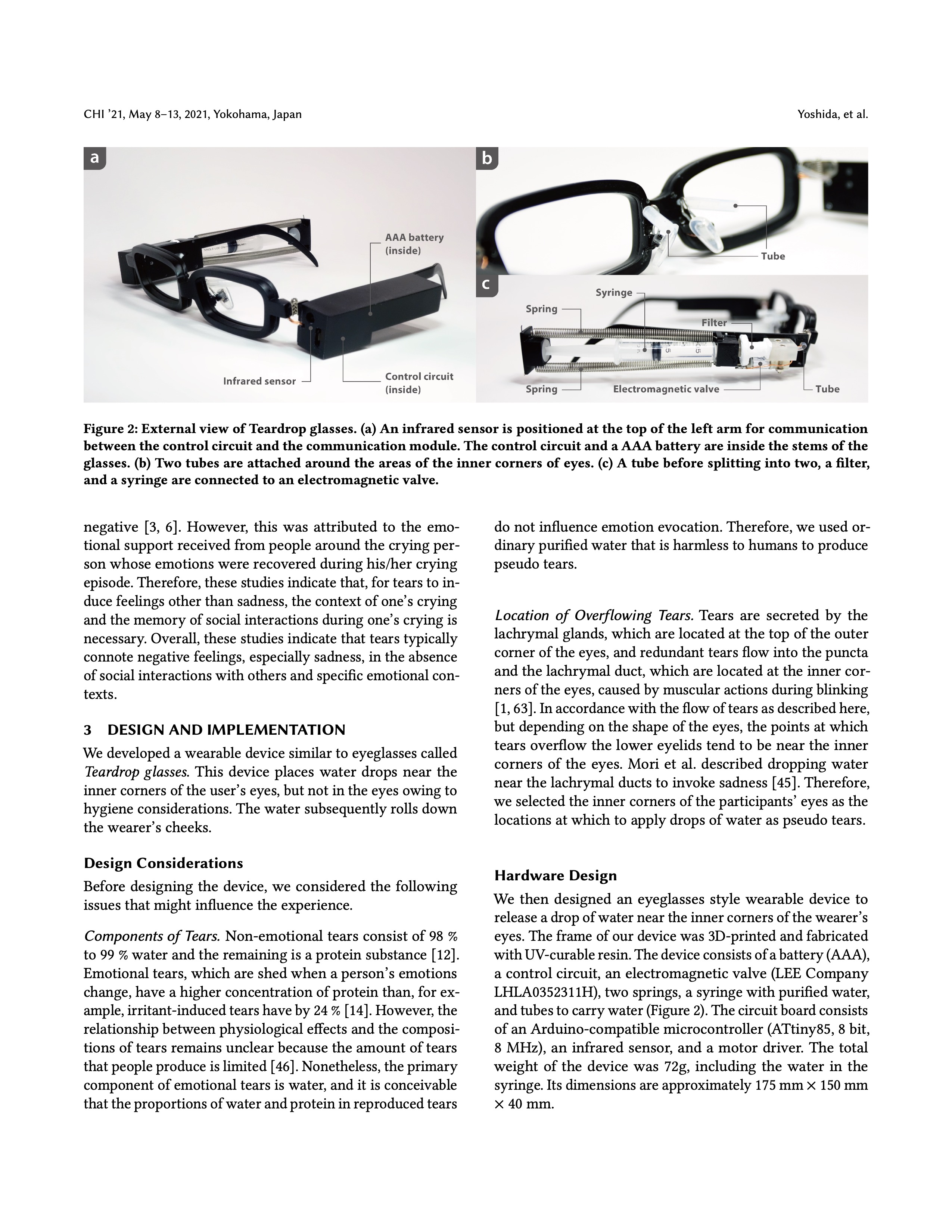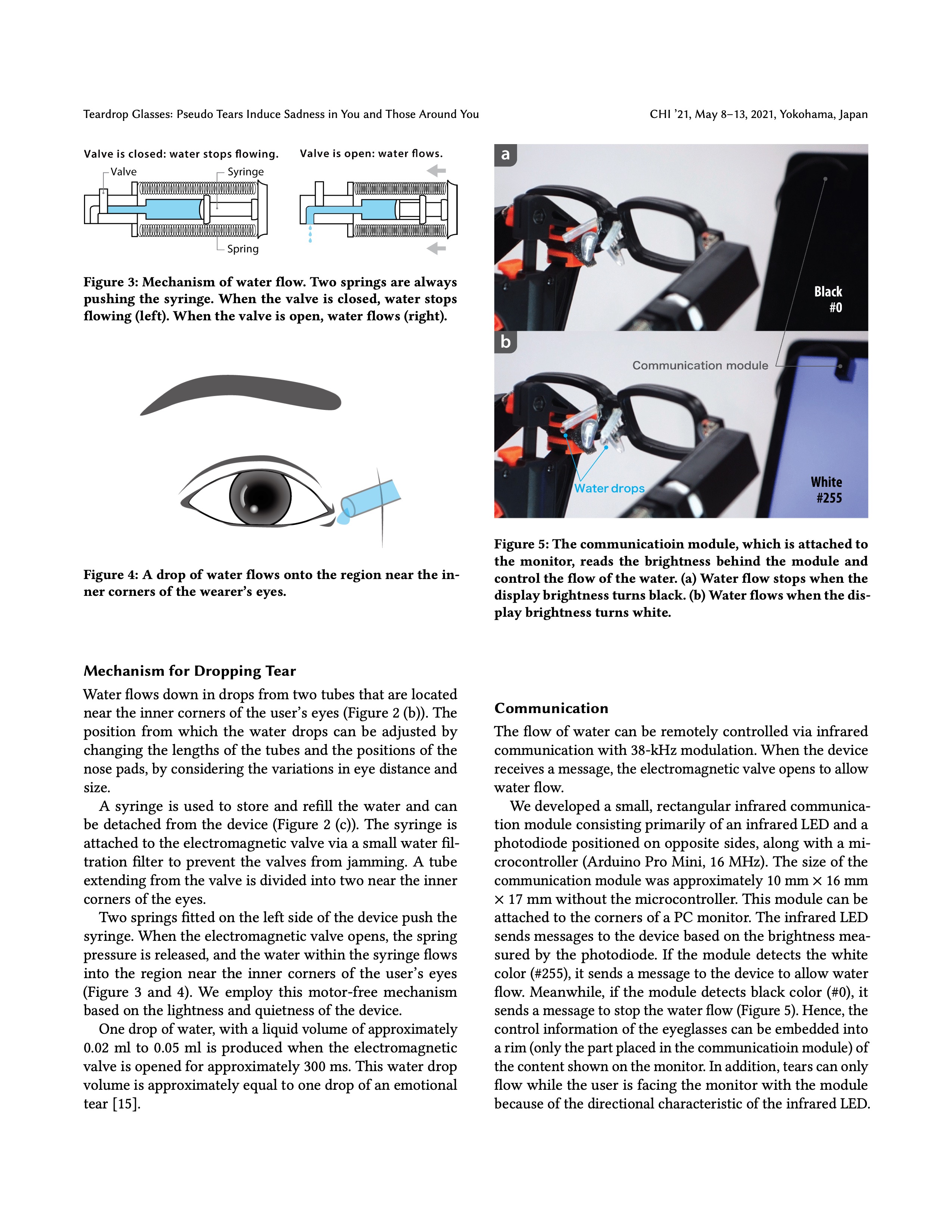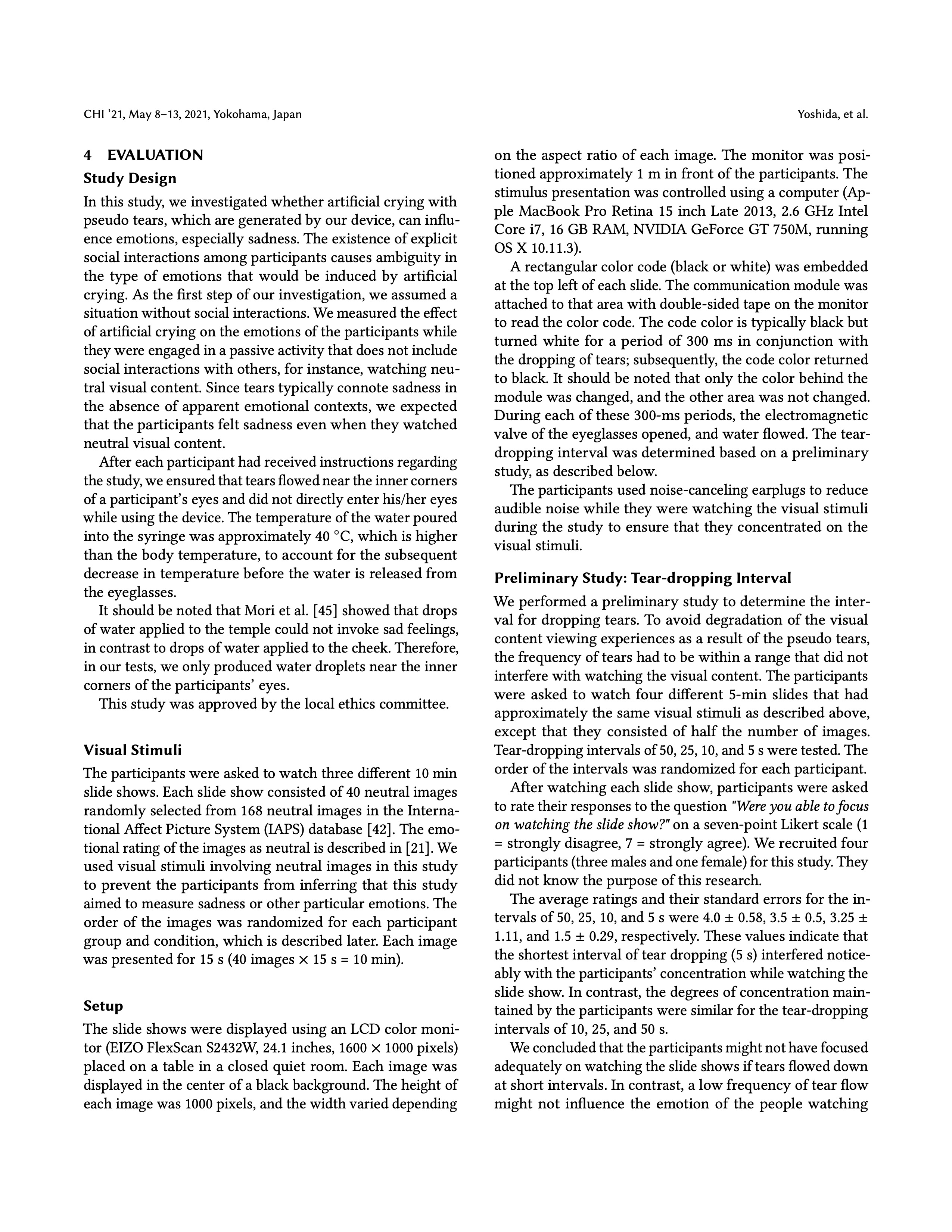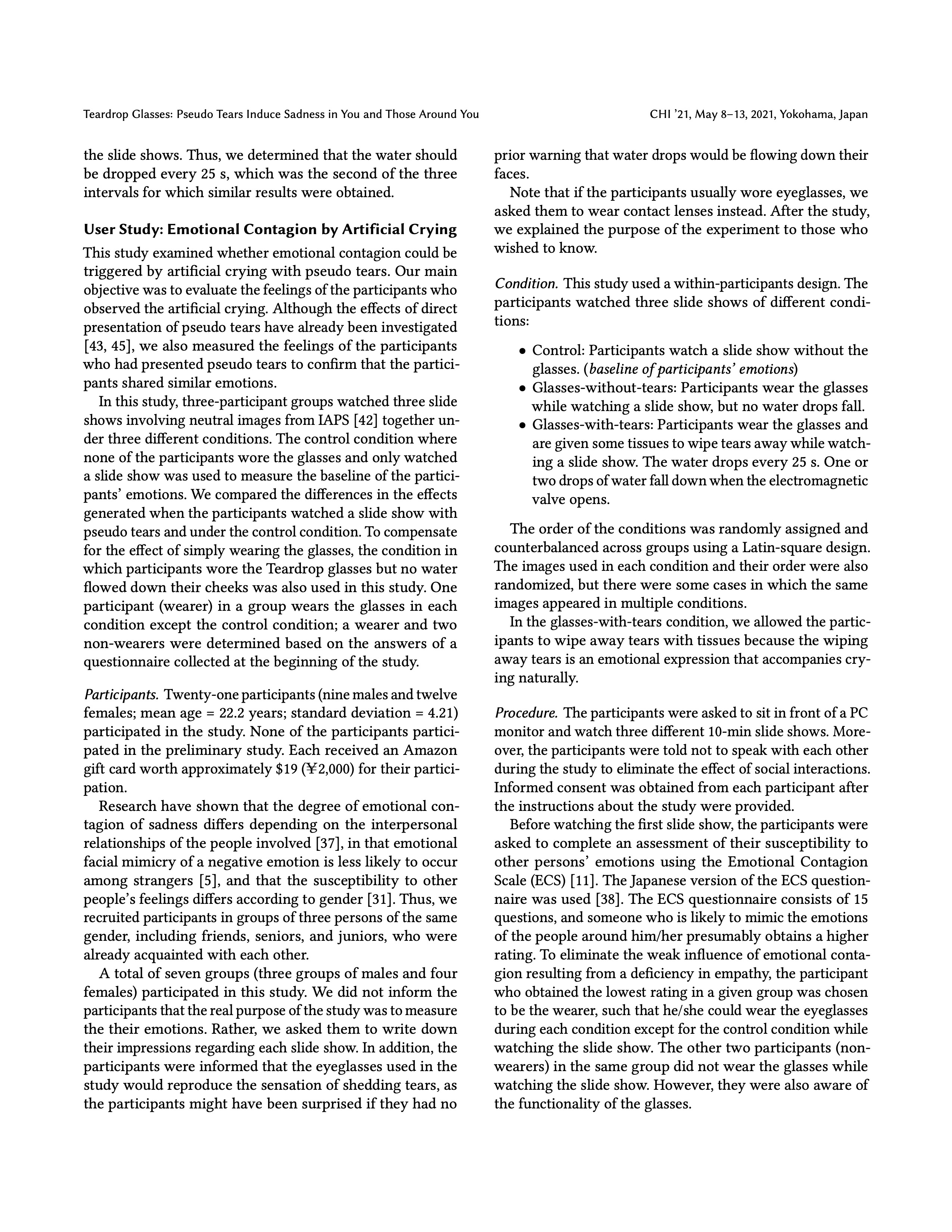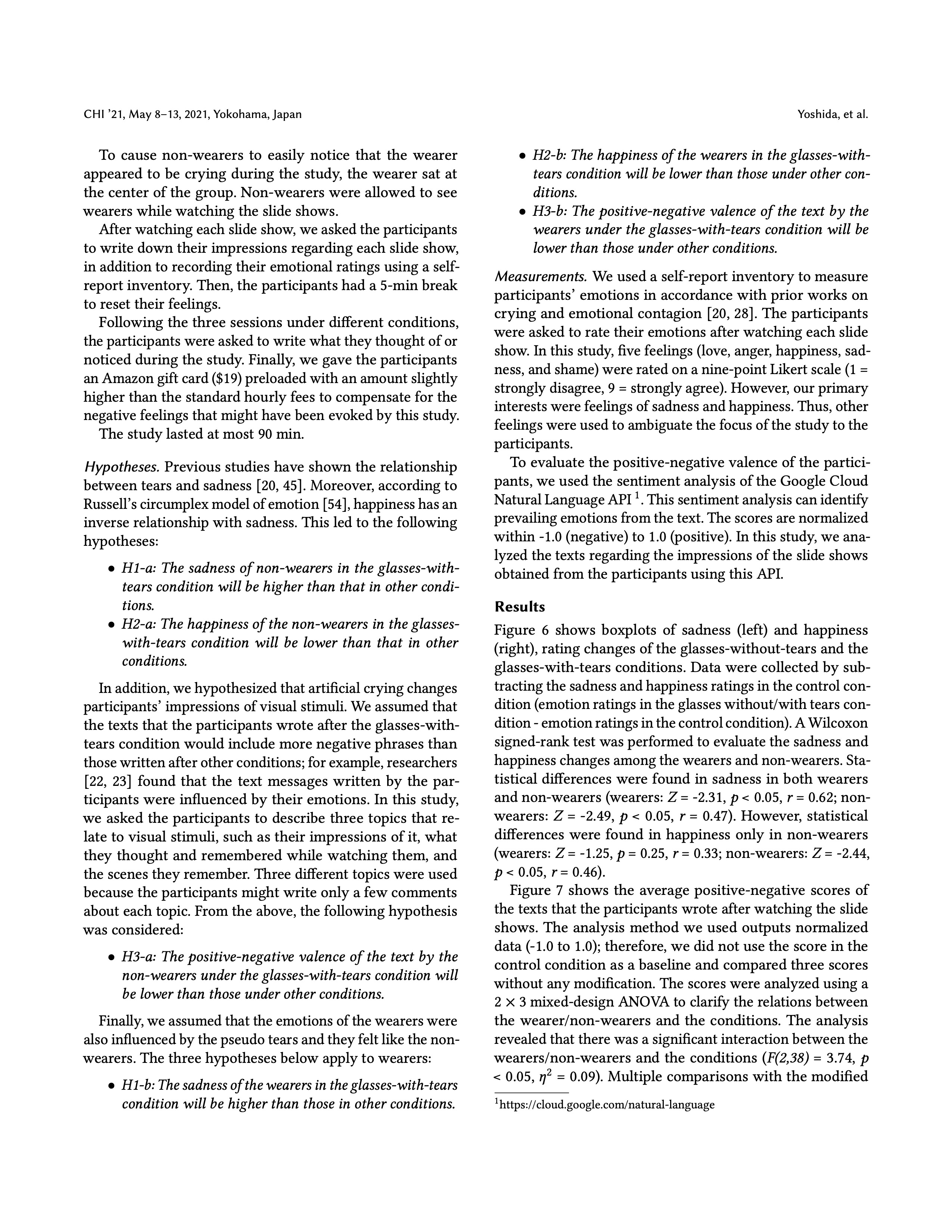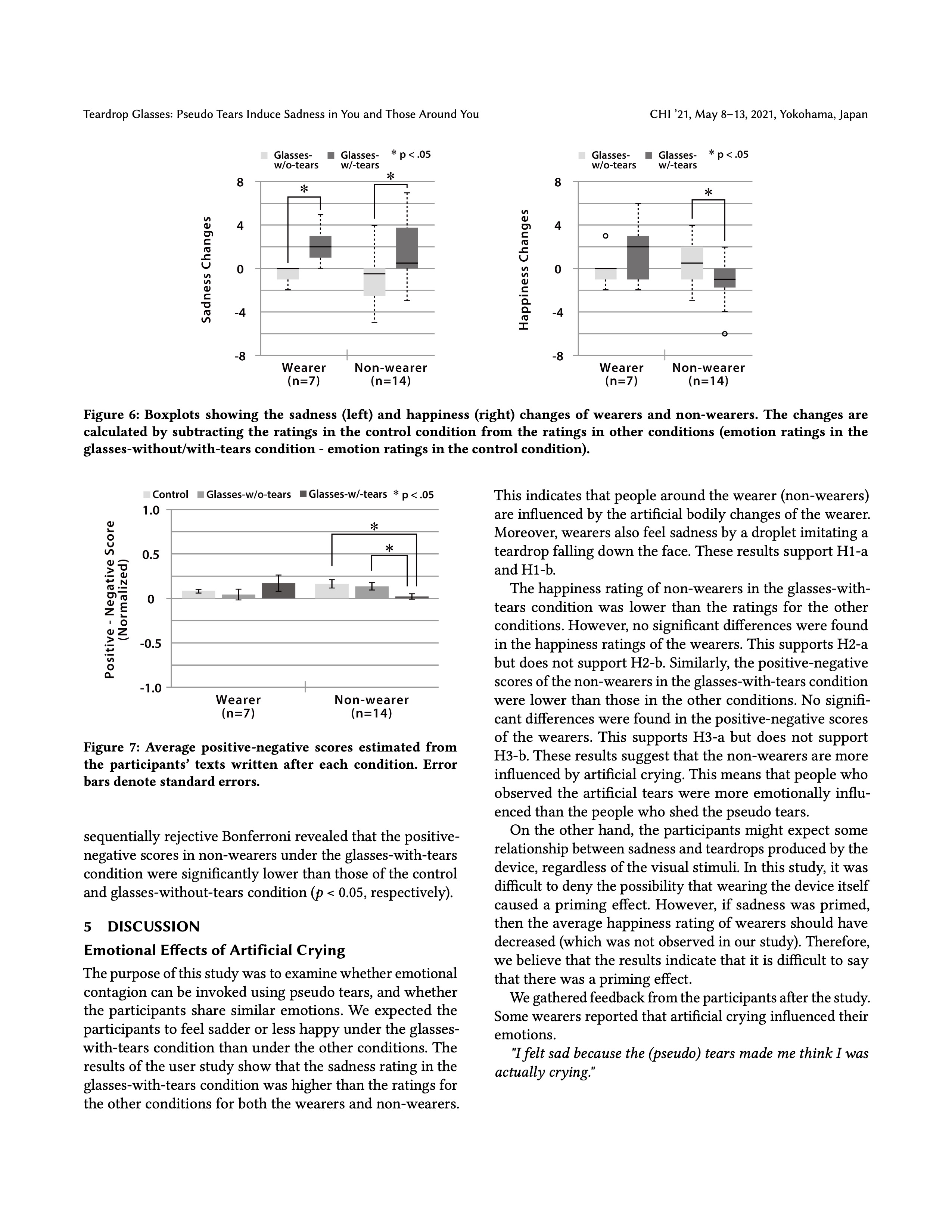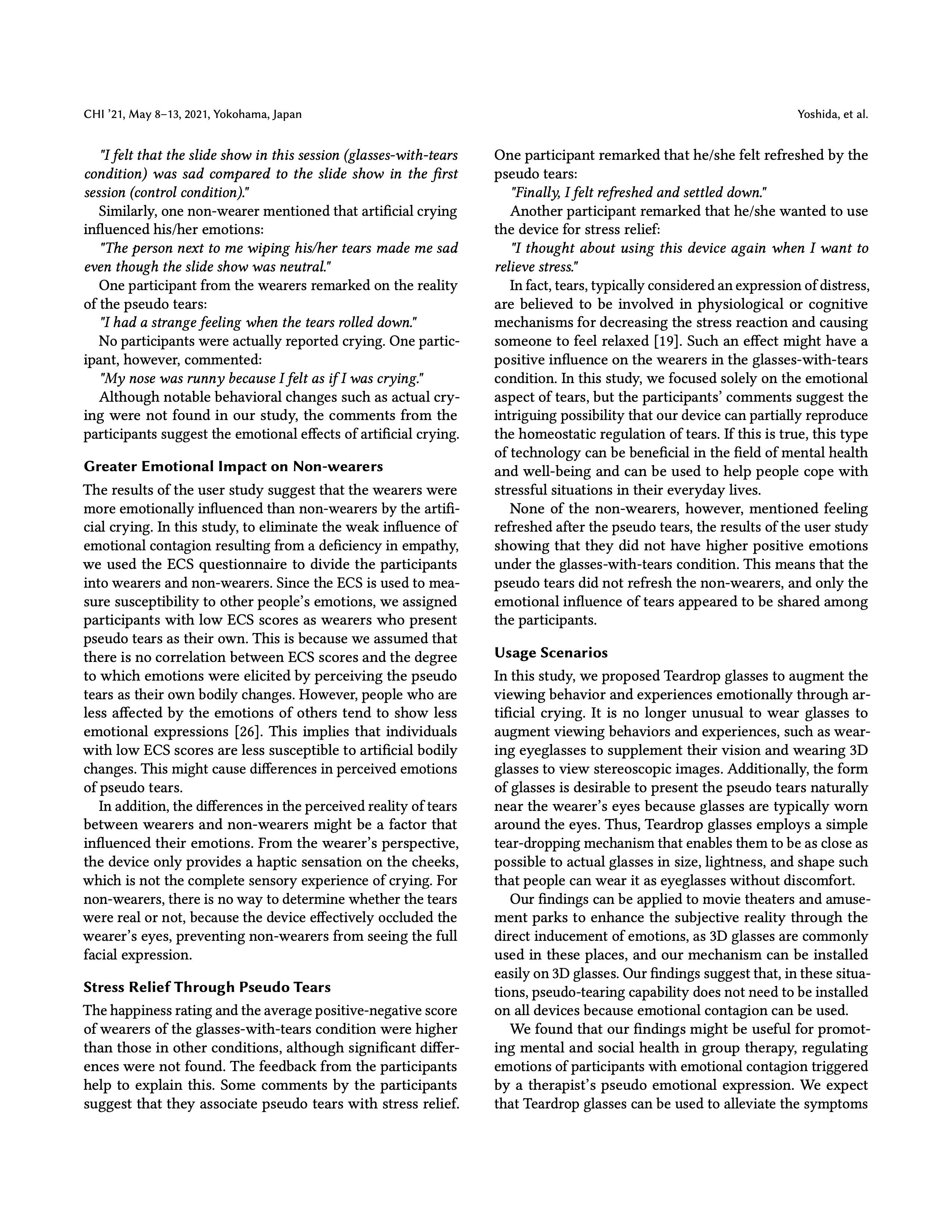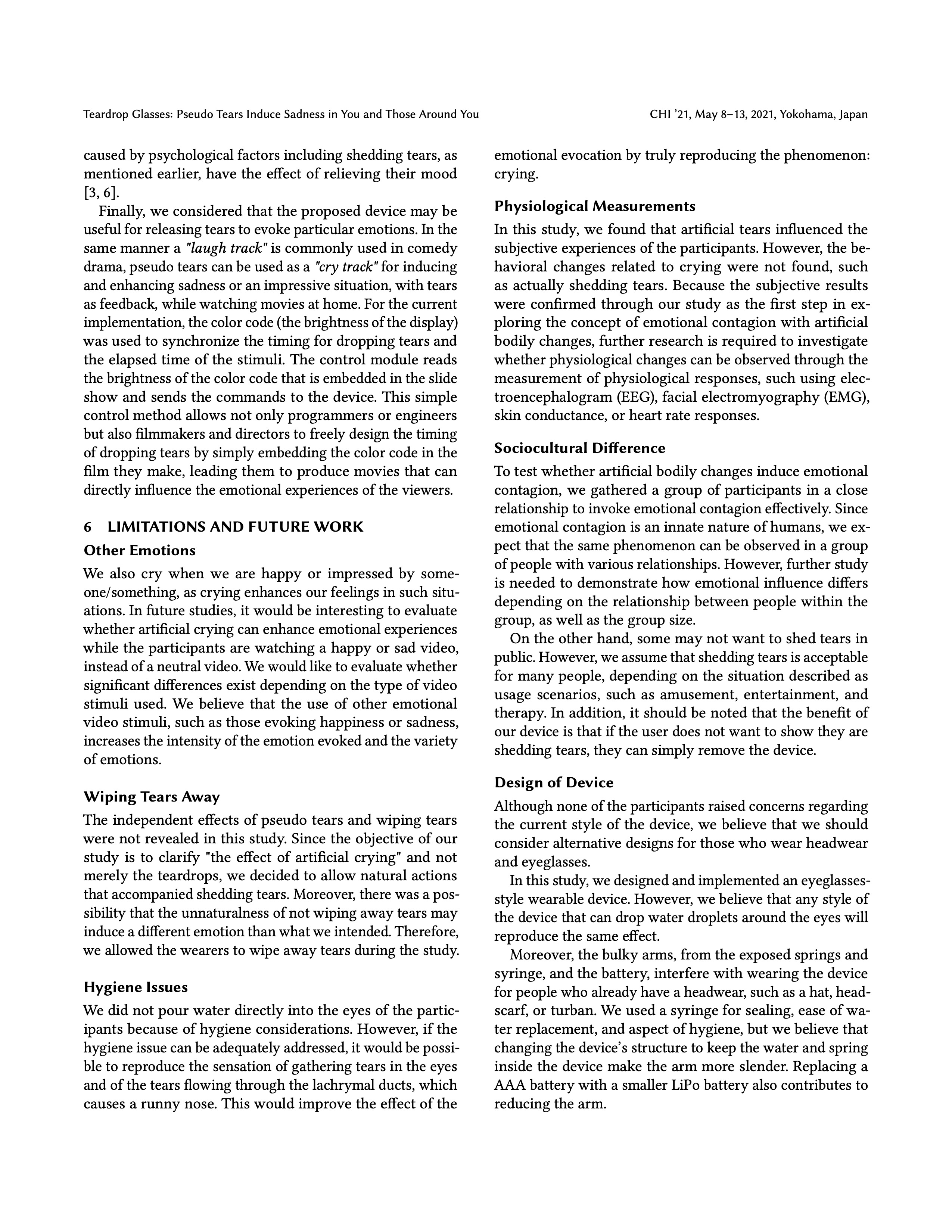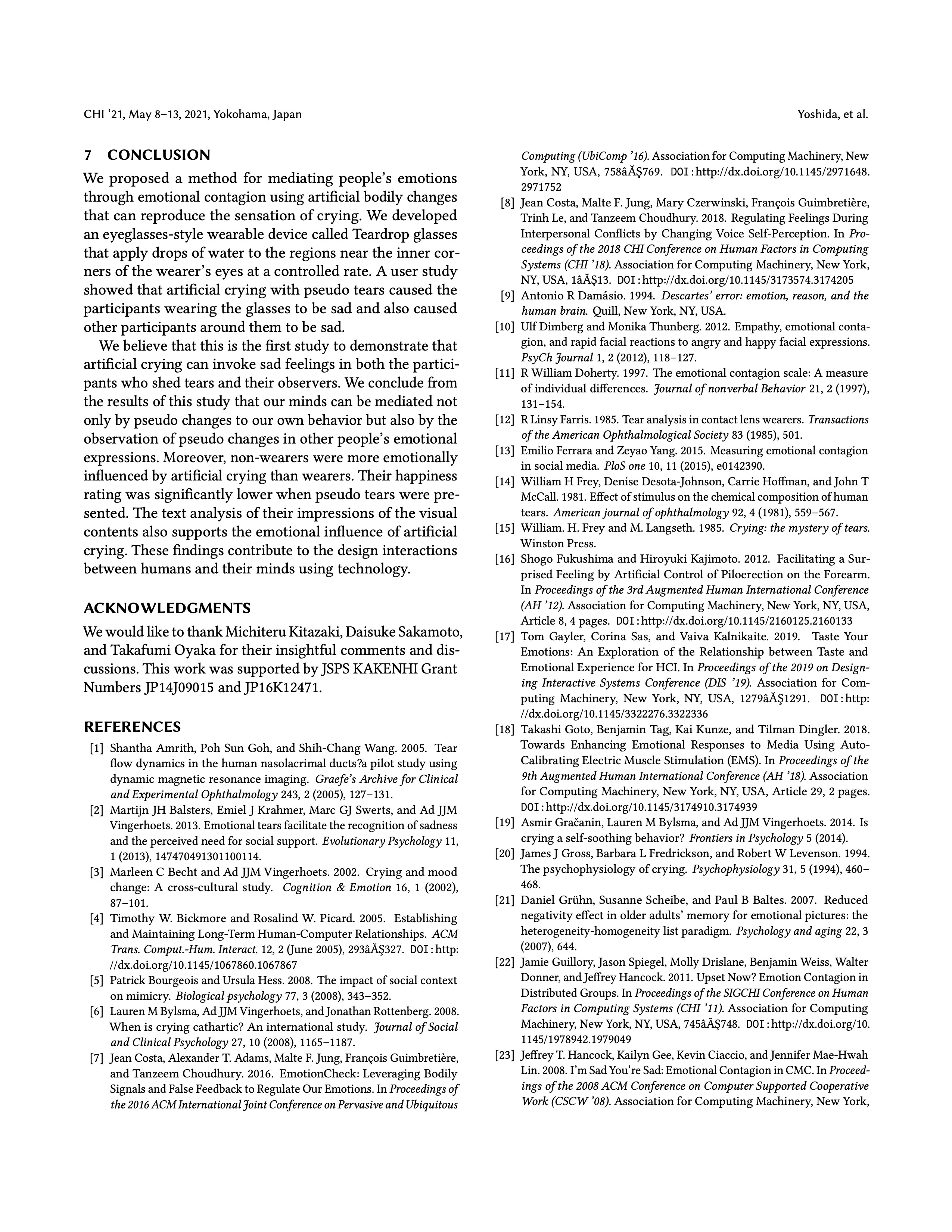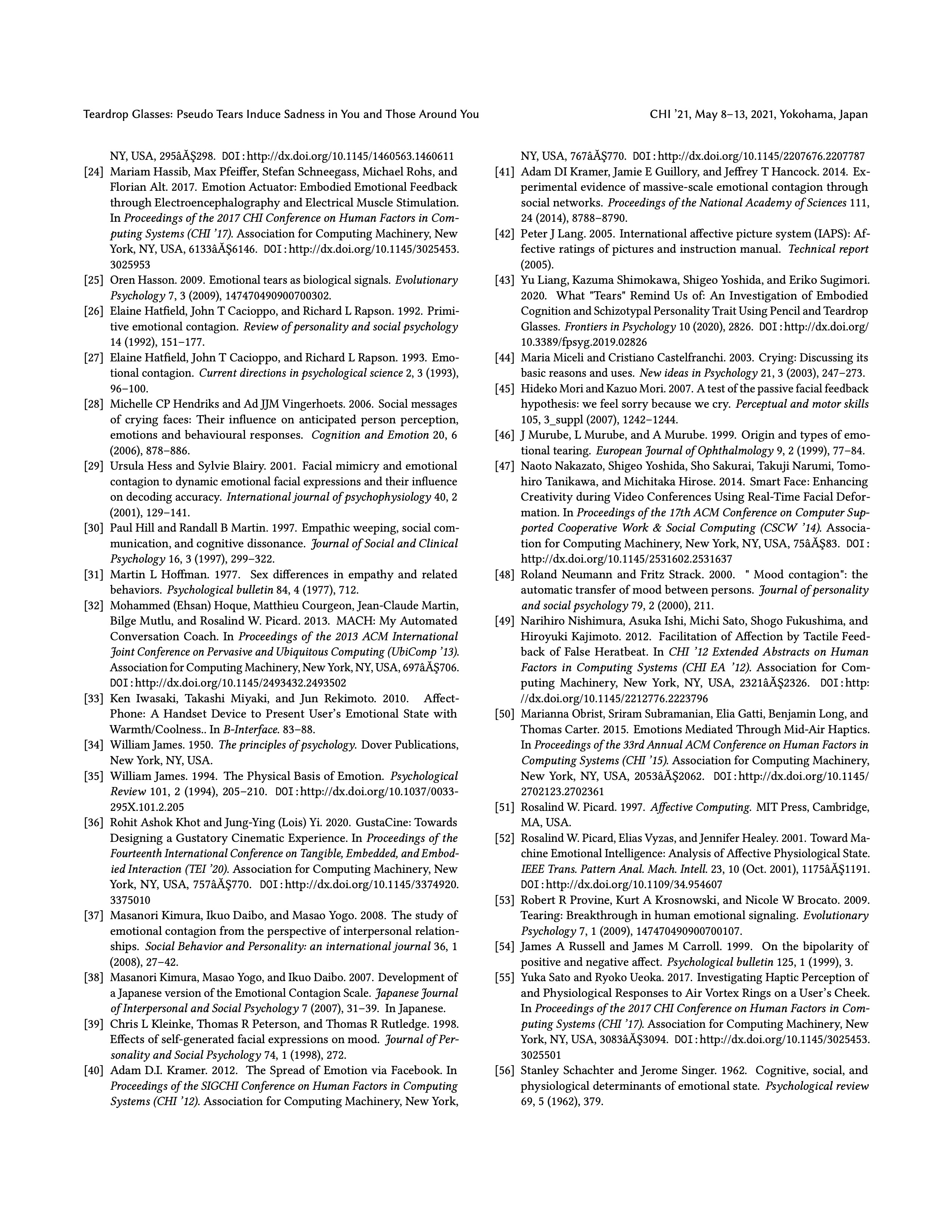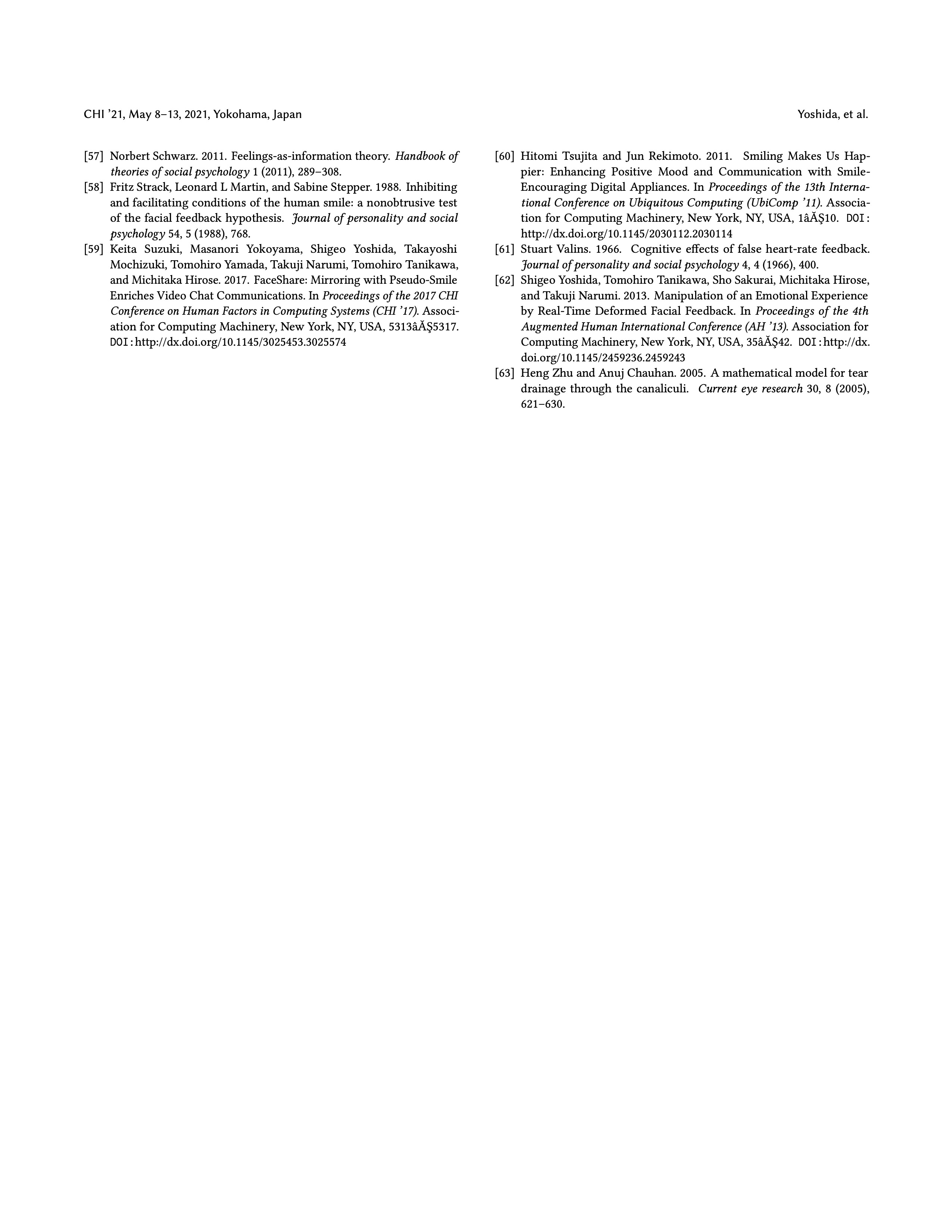涙眼鏡 / Teardrop glasses: Pseudo Tears Induce Sadness in You and Those Around You
30 sec ver.: https://youtu.be/yCkBQ_eBfJoPresentation: https://youtu.be/eRjJvT_rBEY
About
Emotional contagion is a phenomenon in which one’s emotions are transmitted among individuals unconsciously by observing others’ emotional expressions. In this paper, we propose a method for mediating people’s emotions by triggering emotional contagion through artificial bodily changes such as pseudo tears. We focused on shedding tears because of the link to several emotions besides sadness. In addition, it is expected that shedding tears would induce emotional contagion because it is observable by others. We designed an eyeglasses-style wearable device, Teardrop glasses, that release water drops near the wearer’s eyes. The drops flow down the cheeks and emulate real tears. The study revealed that artificial crying with pseudo tears increased sadness among both wearers and those observing them. Moreover, artificial crying attenuated happiness and positive feelings in observers. Our findings show that actual bodily changes are not necessary for inducing emotional contagion as artificial bodily changes are also sufficient.
情動伝染とは、他者の感情表現の観測を通して無意識の内に感情が周囲に伝わっていく現象である。本論文では、人工的な身体変化(擬似的な涙)を利用して情動伝染を誘発することで、感情を媒介する方法を提案する。落涙に着目した理由は、悲しみ以外にもいくつかの感情との関連性があることや、他者から観測可能な身体変化であり情動伝染を誘発することが期待されるためである。そして、目の近くで水滴を放出する眼鏡型の装置「涙眼鏡」を設計した。水滴は頬を伝って流れ落ち、本物の涙を模倣する。実験を通して、擬似涙によって装置の着用者と周囲にいる擬似涙の観測者の両方で悲しみが増大することが明らかになった。さらに、擬似涙は観測者の幸福感やポジティブ感情を減衰させることも明らかになった。これらの結果から、情動伝染には実際の身体の変化は必要なく、人工的な身体の変化でも十分であることがわかった。
Theories of Emotions
The mechanism of how we feel emotions has been studied for a long time and various theories have been proposed and discussed throughout history. These theories of emotions share a similar notion that emotions are triggered by recognizing changes in one’s own body.
Moreover, the bodily changes of others also influence our minds. A phenomenon in which emotion is unconsciously and instantly transmitted among people is known as emotional contagion. This is caused by observing another person’s bodily changes or other emotional expressions, which are physical manifestations of one’s emotions.
Based on the theories of emotions, we came up with an idea to mediate the emotional experiences of multiple people by presenting the artificial bodily changes (pseudo tears in this work) in one person and letting others around him/her observe the artificial bodily changes.
私たちが感情を知覚するメカニズムに関して、これまで様々な理論が提唱・議論されてきた。これらの理論に共通している点は、自分自身の身体変化を認識することで感情が引き起こされるという考え方である。
さらに、他者の身体変化も感情に影響を与えることがわかっている。(上で説明したように)感情が無意識の内に瞬時に伝搬していく現象を情動伝染と言う。情動伝染は他者の身体変化や感情表出を観測することで引き起こされる。
こうした感情に関する理論のもと、他者の人工的な身体変化(本研究では擬似涙)によって、身体変化を提示された人物だけでなく、それを観測した周囲の人物の感情体験を同時に生起することを思いついた。
Design of Teardrop glasses
We focused on shedding tears as a trigger of emotional contagion. Then, we developed a wearable device similar to eyeglasses called Teardrop glasses. This device places water drops near the inner corners of the user’s eyes, but not in the eyes owing to hygiene considerations. The water subsequently rolls down the wearer’s cheeks.
本研究では、情動伝染の引き金として落涙に着目し、眼鏡型のウェアラブル装置「涙眼鏡」を設計した。装置から目元に垂らした水滴が、装着者の頬を流れ落ち、落涙を再現する。
Publications
Shigeo Yoshida, Takuji Narumi, Tomohiro Tanikawa, Hideaki Kuzuoka, and Michitaka Hirose. 2021. Teardrop Glasses: Pseudo Tears Induce Sadness in You and Those Around You. In CHI Conference on Human Factors in Computing Systems (CHI ’21), May 8–13, 2021, Yokohama, Japan. ACM, New York, NY, USA, 14 pages. https://doi.org/10.1145/3411764.3445741
Yu Liang, Kazuma Shimokawa, Shigeo Yoshida, Eriko Sugimori. 2020. What “Tears” Remind Us of: An Investigation of Embodied Cognition and Schizotypal Personality Trait Using Pencil and Teardrop Glasses, Frontiers in Psychology, Vol.10, Jan. 2020. https://doi.org/10.3389/fpsyg.2019.02826
猪石有希, 吉田成朗, 谷川智洋, 寺澤悠理, 梅田聡: 流涙が情動表出と抑制機能に与える効果―涙眼鏡を用いた検討―, 第37回日本生理心理学会大会, 2019年5月
Exhibitions
涙眼鏡, Cyber Interface Lab Exhibition "Cybernetic Minds", 東京大学, 2017年2月28日 link
涙眼鏡, 東京大学制作展 extra 2016, 東京大学, 2016年7月8日-7月11日 link
涙眼鏡, SENSORS IGNITION 2016, 虎ノ門ヒルズ, 2016年2月26日 link
Teardrop glasses, Ars Electronica 2015, Austria Linz, Sep. 3-7, 2015. link
涙眼鏡, 東京大学制作展 EXTRA 2015, 東京大学, 2015年7月10日-7月13日 link
涙眼鏡, 第15回 東京大学制作展, 東京大学, 2013年12月4日-12月9日 link
Downloads
The paper, presentation slides, and videos in this page can be used under the terms of
Creative Commons Attribution-NonCommercial-NoDerivatives 4.0
International (CC BY-NC-ND 4.0).
https://creativecommons.org/licenses/by-nc-nd/4.0/
Credits
Photo and Film: Akira Nomoto
Music: Tomikazu Karl Saegusa
Development Support: Takafumi Oyake and Kasumi Yajima.
ACKNOWLEDGEMENTS
We would like to thank Michiteru Kitazaki, Daisuke Sakamoto, and Takafumi Oyake for their insightful comments and discussions. We thank Toshihiko Fukushima for letting Shigeo know how to use Projet 3D printer and Keiko Fujii for opening the shared workshop when Shigeo didn't have the key to open the workshop. This work was supported by JSPS KAKENHI Grant Numbers JP14J09015 and JP16K12471.
